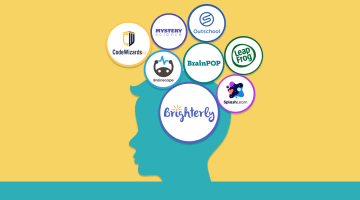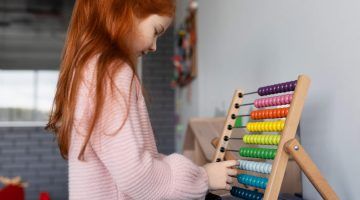The A-Z on Mindfulness for Kids
Updated on January 13, 2024
Children are curious beings with active minds. Practicing mindfulness at their age has numerous benefits, such as making them more attentive. Kids who live in the moment relieve stress on caregivers, parents, and teachers alike. If you are interested in learning more about mindfulness and how it can help your child, this article goes in-depth.
What is mindfulness for kids?
Before knowing how mindful behavior helps children, you must understand what it is. So, what is mindfulness for kids? In a child’s understanding, mindfulness is not the wellness and meditation that we know as adults. For them, it is simply the ability to stay in the moment and be self-aware.
Considering that we are in a world with so many distractions, the idea of mindfulness for kids suddenly sounds paradoxical. The way we react to this ever-buzzing world, dealing with uncertainties and anxieties and finding it hard to breathe, relaxing and enjoying the moment, is how kids see it.
Children used to be distracted by basic things like noticing a red ball amid blue balls or hearing a peculiar sound. These days, children develop anxiety and get distracted by gadgets, adults’ behaviors, and the bustle of city life. The mindfulness definition for kids emphasizes kids’ ability to detach from these distractions, concentrate on what they see, and be aware of their environment.
Let’s use the blue ball vs. red ball example to show how simple mindfulness is. If your child is playing with blue balls and you toss a red ball into the fray, they could get distracted and abandon the blue balls. But if they focus on the blue balls, enjoying playing with them while ignoring the red ball, they are mindful.
The importance of mindfulness for kids
Why is the concept of mindfulness important for kids? The answer is simple. While in their formative stages, children pick up habits and mannerisms that stay with them till they age.
Mindfulness is a continuous practice. You do not wake up one day to say ‘I am mindful’ and then feel that way for the rest of your life. Every waking moment in your life is a chance to practice mindfulness. While there will be time to unlearn things as kids grow, the good habits they pick in their tender years often remain, especially when nurtured.
Mindfulness for kids doesn’t face much resistance, unlike difficulties in staying consistent when starting in adulthood. When your child learns how to practice mindful behavior, it becomes part of their daily habits. It will help them deal with anxiety they may encounter as teenagers.
According to the CDC, anxiety and depression may affect 9.4% of children between 3 and 17 years, which is approximately 5.8 million children. Practicing mindfulness at a young age will protect children’s mental health as they grow and reduce their chances of dealing with anxieties that may arise from distractions.
1:1 Math Lessons
Want to raise a genius? Start
learning Math with Brighterly
 Let’s start learning Math!
Let’s start learning Math!
Mindful behavior vs. mood-dependent behavior
We all aspire to be mindful; however, most people exhibit mood-dependent traits. Those behaviors are the norm for kids who have little or no control over their inhibitions. It may be easy not to react based on your mood as an adult because you have enough self-control to stop yourself. However, kids don’t have the luxury of experience and better judgment, so they often act based on their moods.
Mindful behavior involves looking at a situation and making a level-headed decision, not instinctively reacting. It is a lofty expectation for you to have of children who are wired to follow their moods and impulses naturally. However, the task’s difficulty does not denote impossibility; it just shows how much work needs to be done.
The difference between the two behaviors is sometimes in the time it takes to react to situations and the logic behind these reactions. For example, when you take a toy from a child, the first thing they do is throw a tantrum because they do not know how to articulate the emotions they are feeling at that moment. However, if a child is practicing mindfulness, you may get a delayed reaction which may or may not involve them asking you why you took the toy or simply just watching you and hoping you return it.
Children are naturally impulsive, and most impulsive decisions are mood-dependent. Sometimes, the emotions that a child is saddled with can be so overwhelming that a mood-dependent reaction seems the easiest and the most appropriate thing to do. But with some help, they can learn to overcome overwhelming emotions and react with a mindful behavior instead of a mood-dependent behavior.
Contrary to what you may think, your child is not too young to start differentiating between mood-dependent behaviors and mindful behaviors. The average age for your child to start exercising control over their emotions is 5. You will likely begin teaching them the importance of sorry, thank you, and excuse me before this age, so emotion control is possible at the age of 5.
With mood-dependent behaviors, you will have to deal with more tantrums than you can handle at a time, while mindful behaviors will grant you more strategic, value-based reactions.
The benefits of mindfulness development
Before you engage your child in developing mindfulness, let us look at some benefits of this exciting practice. Here are five benefits of developing mindfulness for kids:
Mindfulness development builds focus
Mindfulness for kids is an exercise on mental focus. Being mindful involves focusing on what is in front of you and ignoring what lies in the periphery. The most significant benefit of mindfulness for kids is building concentration because the bane of their learning speed is their penchant for distractions.
Mindfulness improves children’s health
Mindfulness will help you raise a healthier child since distraction may manifest when kids eat. Being distracted during a meal is an unhealthy eating habit and could cause kids to choke, spill food, or not eat enough. By setting every other activity aside during lunch or dinner, your child will finish faster, eat more, and be healthier.
Mindfulness dispels anxiety
The basis of anxiety is worrying about things that have not happened yet or things that may not even occur. When this mental stress hits children, they are immediately overwhelmed. Many thoughts cloud their reasoning and push them to make irrational decisions.
A common manifestation of anxiety that mindful behavior can solve is the fear of public speaking. Many children shudder when presenting their thoughts in their classmates’ presence. But if you teach your child to practice mindfulness and focus on what they studied instead of their classmates’ gaze, they will handle the anxiety better.
Mindful practice helps kids make better decisions
Mindfulness helps a child stay in the moment instead of getting troubled by thoughts of impending doom. Kids will improve their decision-making with enough practice. And that skill will increase their chances of getting favorable outcomes in high-pressure situations. Practicing mindfulness, your child can control their emotions, manage expectations, and stay calm.
Mindfulness improves confidence in kids
Many things can cause a lack of confidence in kids ranging from social anxiety to bad grades and an inability to be in charge of their emotions. All of these issues can be solved if a kid is using mindful behavior.
For example, when a child is attentive in class, they do well and get good grades, boosting their confidence. In like manner, when they can get over their social anxiety to relate with their peers, they lose that timidity that used to be at the forefront of all their interactions.
1:1 Math Lessons
Want to raise a genius? Start
learning Math with Brighterly
 Let’s start learning Math!
Let’s start learning Math!
How to teach mindfulness?
The process of teaching mindfulness to kids is not complicated. The bulk of the work is from your end because kids see you as a practical example. But once you teach children the basics, you only have to keep reminding them to practice what they have learned. So, here are three steps to teaching mindfulness:
Simplify the process
Most people find it hard to teach or practice mindfulness because they think mindfulness is connected to cosmic energies. Yes, some parts of mindfulness deal with understanding the universe, but those are advanced stages of mindfulness. Some people get through life practicing mindfulness without getting into all of that deep stuff.
Focus on teaching your child only primary practices. Some of these basic mindfulness activities for kids include:
- Removing distractions from learning places
- Listening to one lesson, story, or instruction at a time
- Paying attention to one thing at a time
- Taking deep breaths when they feel overwhelmed
- Thinking about their actions and words before they let them out
These are simple mindfulness exercises for kids that you could employ to teach your children mindfulness.
Teach kids gratitude
To be grateful for something, you have to acknowledge its existence, which means you have to be paying attention. Being in the present requires that your child gets to notice everything that happens to and around them. Teach them to be thankful for every meal, appreciate every gift, no matter how inexpensive, and talk about how presents make their lives easier. Be an excellent example of a mindful person.
Be a role model
Now, this is the hard part. Parents want mindful kids but sometimes find it hard to practice mindfulness. If you’re going to teach your children the benefits of mindfulness and make them practice mindfulness, showing them mindfulness videos for kids is not enough.
Your children have to see you surmount difficulties and handle anxiety through mindful practice. You are your children’s first role model, and they’ll often copy your reactions, behaviors, and mannerisms. So, you have to show them how mindful behavior has helped you.
Conclusion
Practicing mindfulness is an essential part of raising kids. Being in the present, thinking of actions before carrying them out, and controlling their own emotions will help your children grow into better adults. Teaching them mindfulness will also help you start practicing mindfulness, which will help you become a more responsible parent.











